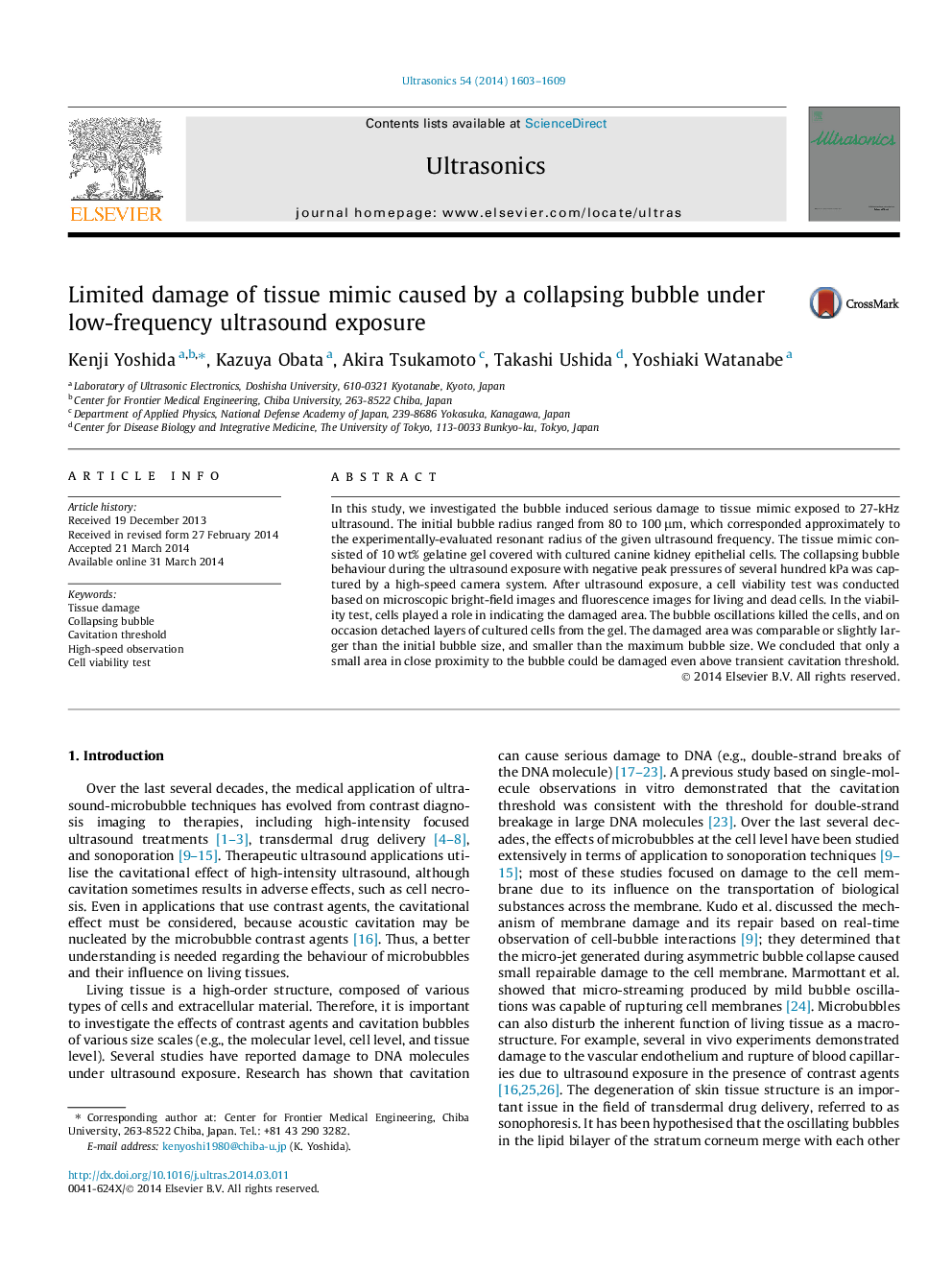| Article ID | Journal | Published Year | Pages | File Type |
|---|---|---|---|---|
| 1758847 | Ultrasonics | 2014 | 7 Pages |
•We observe that a bubble induce damage to tissue mimic under ultrasound exposure.•Violently oscillating bubble pushes and pulls surface of tissue mimic.•Cell viability test shows two types of damage, the detachment and dead of cells.•Damaged area is smaller than maximum bubble size, and larger than initial size.•The damage is localized even above transient cavitation threshold.
In this study, we investigated the bubble induced serious damage to tissue mimic exposed to 27-kHz ultrasound. The initial bubble radius ranged from 80 to 100 μm, which corresponded approximately to the experimentally-evaluated resonant radius of the given ultrasound frequency. The tissue mimic consisted of 10 wt% gelatine gel covered with cultured canine kidney epithelial cells. The collapsing bubble behaviour during the ultrasound exposure with negative peak pressures of several hundred kPa was captured by a high-speed camera system. After ultrasound exposure, a cell viability test was conducted based on microscopic bright-field images and fluorescence images for living and dead cells. In the viability test, cells played a role in indicating the damaged area. The bubble oscillations killed the cells, and on occasion detached layers of cultured cells from the gel. The damaged area was comparable or slightly larger than the initial bubble size, and smaller than the maximum bubble size. We concluded that only a small area in close proximity to the bubble could be damaged even above transient cavitation threshold.
